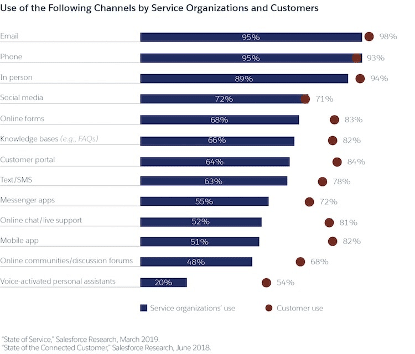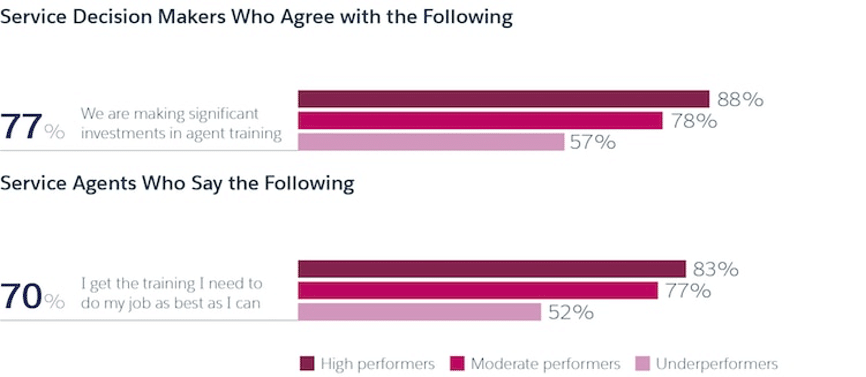Since 2020 and the pandemic first hit, almost every organisation from every industry has had to go from working in physical spaces to working remotely. The massive transition to a remote workforce during the pandemic was out of the need to maintain operations and keep business going.
However, a Gartner survey of company leaders found that 80% have the plan to allow employees to work remotely part of the time going forward, and 47% express the willingness to go full work-from-home. With regards to implementing remote work as a strategy, 78% of CEOs agree, in a PwC survey, that remote workforce and collaboration as the new form of work are here to stay.
The above trends and mindset apply to the field of customer service (as well as any other departments and functions), as customer experience is more important than ever. However, is your team or organisation well-prepared for the transition to a remote workforce? Here are ten customer service mistakes to avoid in shifting to a remote workforce. We will be exploring this topic from three different angles:
- The technologies required to run and streamline operations
- The knowledge and collaboration to make things efficient as an organisation
- Finally, the mindset needed to make the transition as smooth as possible
1. Not equipping the team with proper technologies and tools

Source: RingCentral
Before we talk about the many things that customer service teams need to pay attention to when managing a remote workforce, the number one criteria is having the necessary equipment and tools to actually allow agents to provide services remotely. To make remote service work (this applies to other types of remote work as well), you would need at least the following items for each agent:
- A cloud-based VoIP/communication software solution
- Laptop (business-grade recommended for durability and security)
- Headset with good sound and voice quality
- A stable internet connection (wired or Wi-Fi)
Having a reliable, easy-to-use, and scalable communication platform for your service teams is crucial in every aspect, as failure to keep customers happy will directly impact the relationship you have with your customers, which in turn could hurt your brand in unexpected ways.
For organisations that provide customer service teams with mobile devices to enhance mobility and enable quicker access to resources, it’s important to monitor and manage them well.
That’s why in addition to the traditional communication software, mobile device management is also vital to monitor and provide support for your own team. When the number of devices grows, the need to organise, push updates, and remotely support them efficiently quickly becomes a necessity for maximising your investment for the remote workforce.
2. Not having omnichannel support
If your team or organisation is not focused on omnichannel support, now is the time to adapt. PWC, in their 2020 report, found that companies investing in omnichannel support have jumped from 20% to 80%. In today’s business and commerce landscape, customers, whether it is consumer or commercial, expect your customer service to be present at all times.
The common omnichannel integration and cross-platform support avenues include email, phone, SMS, live chat, and social media. Here are four benefits of having omnichannel support:
- More options for customers to choose from
- Better customer retention and general experience
- Improves the quality of customer data for future support
- Reinforces customer trust with more brand accountability
According to Salesforce research, the average consumer says they use ten different channels to communicate with companies. When comparing the channels that organisations have and the channels that consumers prefer to use, we can see that there are still big gaps for channels like mobile apps and voice-activated services:

Source: Salesforce Research
In addition to the communication aspect of omnichannel support, the ability to support multi-platform – another aspect of omnichannel – is also becoming an integral part of customer service, especially when it comes to supporting mobile apps or mobile customers.
When customers need guidance or tutorial on a mobile device, your customer service team needs to be able to walk them through the procedures of navigating an app or service directly. This usually includes being able to see the device screen, marking the screen or performing gestures to show directions, as well as having voice chat so the agent can communicate and see the screen in action simultaneously.
3. Not taking advantage of intelligent automation

Source: RingCentral
Even before the pandemic, customer service demand has become the focal point for both sellers and buyers. As we go full-blown virtual, the economic, health, and societal crises are pushing this trend even further. Companies need to navigate the influx of demands, the complexity of omnichannel, and the difficulty educating service agents, while keeping the customers happy.
One thing that every customer service team should avoid is neglecting the power of self-service support in the form of AI, automation, and chatbots.
- Chatbots can offload customer service workload by dealing with simple queries, collecting information, and redirecting customers to different responsible stakeholders depending on their needs.
- AI (Artificial Intelligence) and machine learning are becoming more sophisticated in interpreting complex language, remembering the context of an entire conversation, and replying to customers with natural responses.
- Automation is the key to reducing costs and improving your overall efficiency, even when you are under-staffed. Setting up the right flow and checkpoints can help you serve the basic needs of customers and deliver those who require real human interaction to the right agent seamlessly.
4. Not empowering agents to have accessible and relevant customer information
In addition to getting the necessary technologies and tools, having access to relevant customer information and history with your brand is one of the cores of having a good customer experience.
Customers today expect an agent via any touchpoint to be able to instantly pull out his or her history so that whatever issue or questions can be answered in a timely fashion. By now you should start to see that having just omnichannel availability is not enough; you also need to enable your agents to have access to a central database.

5. Not having communication and collaboration with team members
To provide quick and easy access to customer service, one of the most important things every customer service team should look at is the ability to collaborate, especially in a remote workforce environment.
According to Accenture, 95% of collaboration leaders agree that their company is aligned around shared customer experience. Not having shared knowledge and information of customers will be detrimental to the customer experience. Here are some of the best practices to help you improve communication and collaboration:
- Aligning the team’s goals towards customer experience and satisfaction. Avoid creating silos within an organisation, such as having different metrics or goals that are not aligned with the overall interest of customer experience.
- Structure for collaborative, self-managing teams that focus on customer experience. Avoid using the traditional top-down structure. Give your team clear directions and goals and allow room for developing ownership and self-discipline. Make sure that everyone, regardless of the team or division that he or she is in, places customer experience above all.
- Invest in technology solutions that enhance easier collaboration. Using cloud-based collaboration tools for sharing information, progress, and feedback will help make transition and adoption that much smoother. The last thing you want is your staff having the will to collaborate, but legacy technologies or lack of any worthwhile tech hindering their efforts.
6. Not training and educating your agents for remote work
Your customer service teams need to be well prepared to deal with all kinds of challenges. According to Salesforce Research, over 70% of service decision-makers agree that investment in training the team is a high priority, while high performers, too, think that training is integral to helping them succeed.

Source: Salesforce Research (state of service), 2019
For those who are starting out or who are still in the process of optimising the training for your remote workforce, here is a list of things to keep in mind and avoid:
- Respect your employees and team members’ time by drawing a clear line between work and off-work time, even though it may seem “easier” for people to do work at home.
- Leverage technologies like video conferencing and work communication platforms always to keep content and resources available.
- Develop quick bites of information, so it’s easier for team members to learn instead of implementing a traditional training lesson course.
- Focus on practical goals as the purpose of training, not the time in front of the screen. The goal here is for your remote workforce to maintain operational excellence even when things are all virtual.
7. Prioritising solely individual performance over the customer experience
When managing a customer service remote workforce, it’s tempting to just focus on the traditional performance metrics, such as tickets closed, time spent on each session, the number of customers served, etc.
While these conventional metrics are still important when evaluating the performance of each service agent, it might be time to shift some of the emphasis over to measuring the overall customer experience. There are some metrics that have been on the scene for quite some time now, but deserve to get another look:
- Net Promoter Score (NPS): by asking a customer the willingness to recommend your service or product to another person, the NPS is a great and easy way to measure how effective your overall brand or service is. Using a simple 1-10 scale and open text feedback to get quick feedback.
- Customer satisfaction (CSAT): usually used for one-time interaction, CSAT is another easy way to track customer’s satisfaction level. Using a scale of one to five, like the Google Play app ratings, your team can easily get the result without asking the customer to do too much.
8. Underestimating the impact of customer reviews
The workforce may be remote and that could give your team a false impression that it’s easier to do customer service during a turbulent time in a virtual setting. Customer expectations are higher than ever precisely because things are always changing and emotions are volatile.
Given how easily anyone can write a review on different review sites, platforms, or social media, customer service becomes one of the most direct touchpoints that trigger negative reviews. If you are a small company, your customer service teams play a big role in responding to customer reviews, which is an important channel nowadays.
9. Not embracing the power of personalisation

Source: BusinessWire
Today’s consumers (both personal and commercial) have a high expectation of receiving personalised services and see this as a criteria to choose between brands. Even in today’s remote and virtual environment, the expectations won’t be any less.
Personalisation can come in different forms, such as having the right customer information when making contact or tailoring the responses based on different needs. According to a report from KPMG, personalisation has become the strongest pillar in driving customer loyalty in 19 of 27 markets surveyed.
If you are looking for personalisation tactics and to improve customer satisfaction, here are some tips for you:
- Have the correct and relevant customer information when making contact. Make sure you have the infrastructure, platform, and technologies to empower your service agents.
- Tailor your responses to the customer’s different needs instead of using a standardised reply every time. This requires the agents to have the right and relevant customer information (without breaching privacy) and the training needed to give sound and personalised responses.
- Using a preferred channel of the customers (linking back to the necessity of having omnichannel support).
10. Not recognising that remote workforce is here to stay
Finally, with all the technologies, tools, directions, and training in place, the last thing that all the customer service teams need to continuously remind everyone of is the fact that providing support remotely is going to be the norm going forward.
This means that the old ways of doing things will eventually get fazed out. Having the mindset that aligns with the transformation will help organisations to maintain operational excellence and really take advantage of the benefits of running a remote support workforce. Here are some of the critical mindset tips for making the transformation as seamless as possible:
- Expect your teams to take time in making the transition. Be patient and persistent in helping your team to adapt. Empower your agents with the right technologies and training, then trust them to give you expected results.
- Put customer experience as the number one priority for your customer service teams. Try to translate performance metrics into something that will benefit the customers, for they will, in turn, reward you and your brand with positive feedback and long-term loyalty.
- Communicate with the leadership team regularly, so the entire organisation is on the same page in driving customer experience excellence. The transformation relies as much on the culture as the willingness to change. This really goes beyond just customer service alone. Align with sales, marketing, engineering, operations, finance, and every other department to make sure customer experience is baked into everyone’s everyday work.
- Last but not least, know that the state of remote workforce, customer service, and just about everything else is probably going to change at any given time. Be prepared to change with the world and have an open mind to embrace and adapt.
Managing a remote workforce within your customer service team doesn’t have to be a hassle. With the right technology, professional knowledge, and an open-minded mindset, you are enabling your customer service agents to continue providing satisfying customer support while staying productive at the same time.
Originally published Apr 13, 2021, updated Jan 16, 2023
